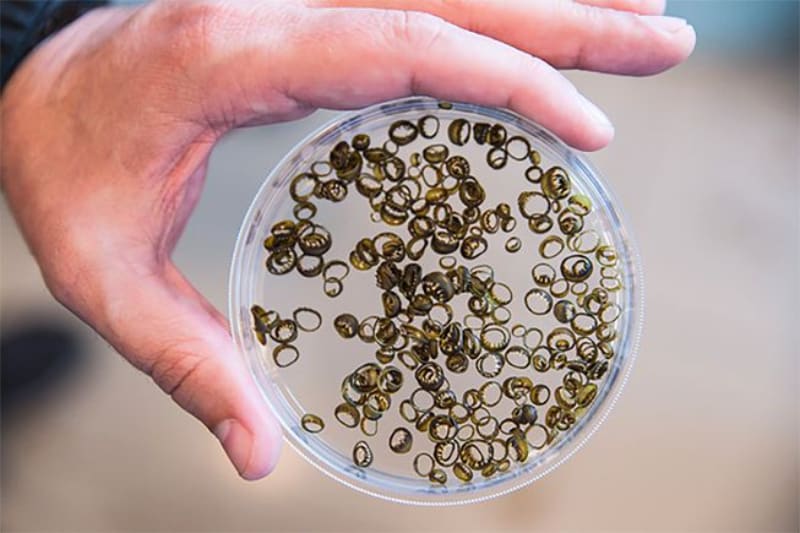A material’s thermal conductivity is often considered an intrinsic and fixed property.
But what if you needed a material that had a certain thermal conductivity at one time and a different thermal conductivity at another? What if you wanted to wear something that kept you cool during the day and kept you warm at night?
“Until recently, you had to basically change the material to get a different thermal conductivity,” said Patrick Hopkins, Mechanical & Aerospace Engineering professor at the University of Virginia.
Hopkins, in collaboration with university scientists and additional researchers at the University of Maryland and the National Institute of Standards and Technology, had been searching for materials that could respond to specific impulses and change thermal conductivity “on-demand.”
The team found their smart material by turning to the squid.
Hopkins and his colleagues discovered that a responsive protein from squid ring teeth contained properties supporting an on-and-off kind of thermal regulation.
“So without changing a material, you can flip a switch and change its thermal conductivity,” Hopkins told Tech Briefs.
Within their suckers, squid have teeth-like structures that allow the cephalopods to grip a variety of surfaces and objects. The proteins within the squid ring teeth feature amorphous and crystalline domains.
Materials and systems do exist that exhibit the ability to switch a material’s intrinsic thermal conductivity. What is special about the squid ring teeth, however, is the magnitude of the thermal switch — the “on/off” ratio.
“When you hydrate these materials, the atoms in the amorphous regions of these materials start to vibrate with large amplitudes, and this large amplitude vibration translates to higher thermal conductivity,” said Hopkins. “It’s the largest to date for switching this intrinsic material property.”
First studied in depth at Penn State , the squid biomaterials can be extracted from the suction cups of the squids, or produced synthetically via industrial fermentation. The proteins are strong, self-healing, and bio-compatible, making them exceptionally suitable for programming at the molecular level, in this case for thermal regulation, according to the researchers.

“The switching effect of thermal conductivity would be ideal for many applications, including athletics,” said John Tomko , a Ph.D. candidate in UVA’s Department of Materials Science & Engineering and lead author of an article about the invention published in August in Nature Nanotechnology .
An athlete, for example, could wear a temperature-regulating fabric – one that responds to body temperature. The biopolymer could have a low thermal conductivity while dry, essentially storing body heat and keeping the athlete’s muscles warm while preparing and in a less active state.
“As soon as the wearer begins to sweat, the material could become hydrated and instantly increase its thermal conductivity, allowing this body heat to escape through the material and cool the athlete down,” Prof. Hopkins told Tech Briefs.
When the person is done training and the sweat has evaporated, the material returns to an insulative state that keeps the wearer warm again.
The squid material could accommodate the whole gamut of athletic scenarios within one garment, said Hopkins.
According to the professor, the switching innovation holds great promise for all sorts of new devices and materials – not just smart fabrics. The ability to regulate temperature on demand also potentially supports the recycling of waste heat to create energy, or the creation of new, self-regulating electrical devices.
“These proteins can be mass produced, 3D printed, made into textiles, you name it, so the end use is potentially endless,” said Hopkins.
What applications do you envision for this kind of “on-demand” thermal conductivity? Share your questions and comments below.

